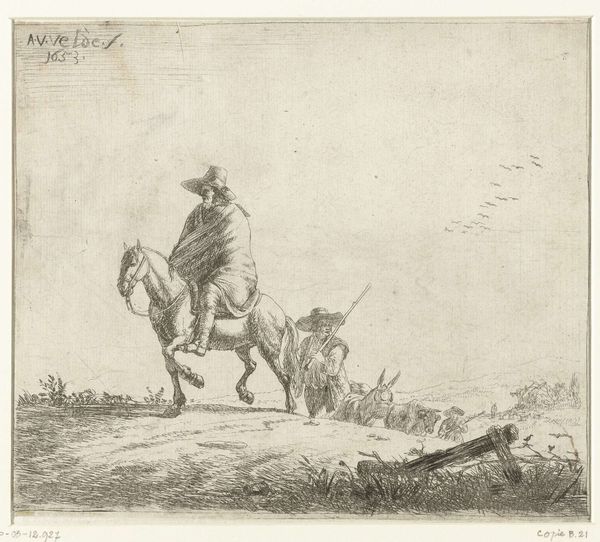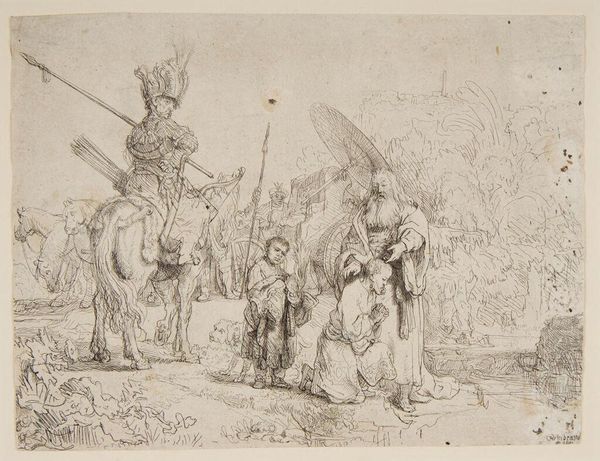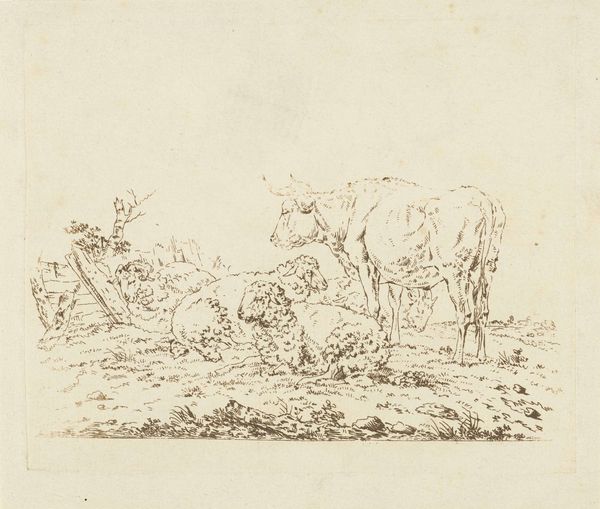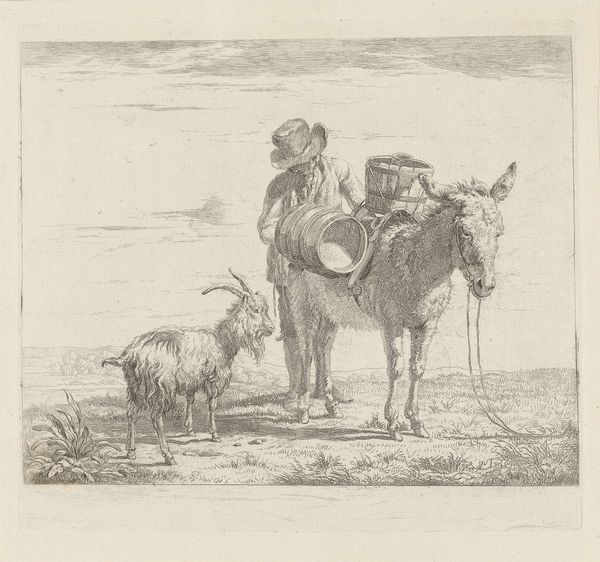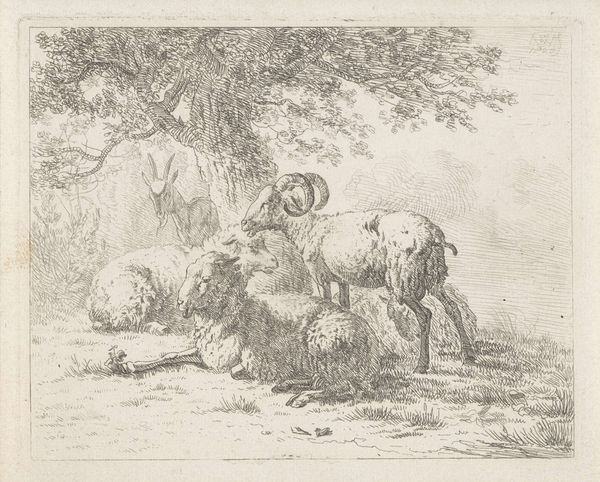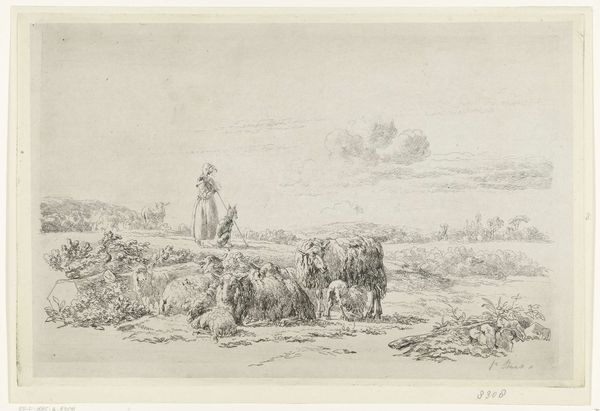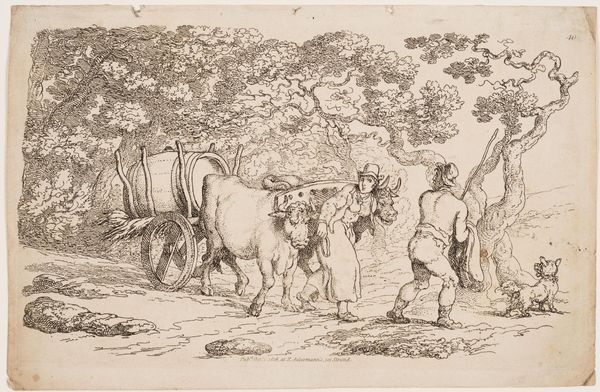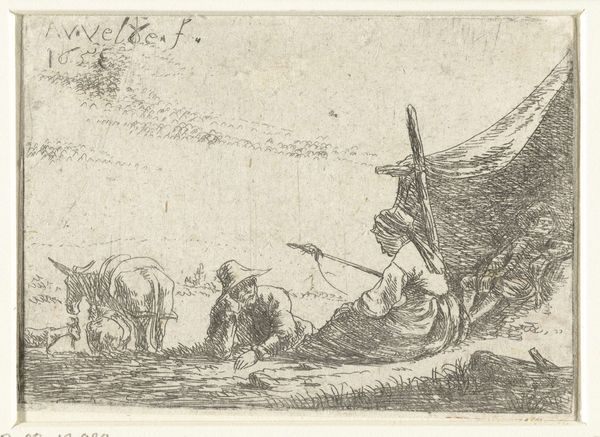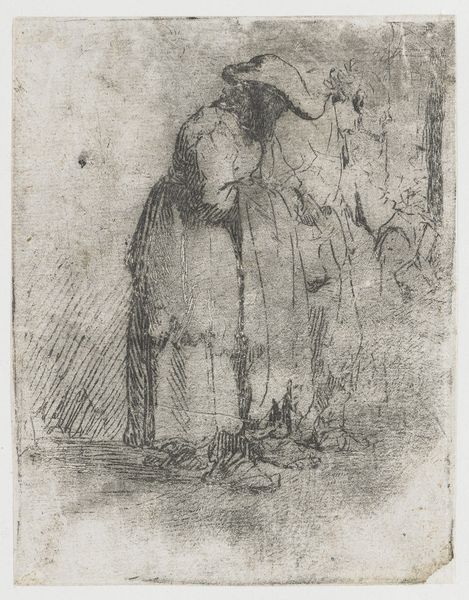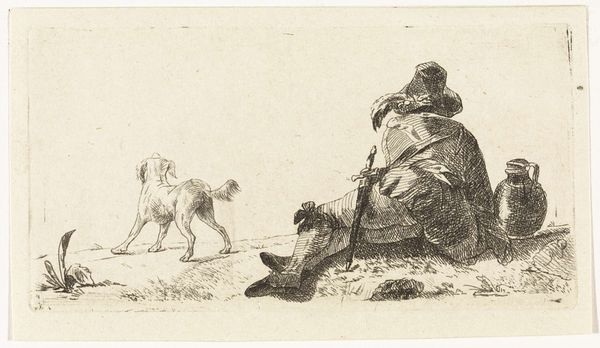
Dimensions: height 251 mm, width 192 mm
Copyright: Rijks Museum: Open Domain
Editor: This is "Schamel geklede reizigers" – or "Poorly Dressed Travellers" – a pen and ink drawing on paper by Francesco Casanova, made sometime between 1737 and 1802. There's a vulnerability in their postures; they seem weary, making their way across a stark landscape. What do you see in this piece? Curator: I see a snapshot of pre-revolution social dynamics, a society deeply entrenched in inequality. Casanova presents these figures not as romanticized wanderers, but burdened individuals, their clothing itself a signifier of their marginalized status. Look closely – how might their "poor dress" be understood in relation to contemporary theories of class and representation? Editor: I guess their clothing places them within a certain class, perhaps reflecting economic hardships prevalent during that era. Were depictions like this common? Curator: Precisely. Genre scenes like this, while seemingly benign, participated in broader narratives about social order. These 'travellers', weighed down by circumstance, could be seen as reflecting the artist's awareness – conscious or unconscious – of the tensions bubbling beneath the surface of 18th-century society. Consider the artist's choice to highlight their weariness – what does that tell us about his potential sympathies, or perhaps his critique? Editor: So, it's more than just a landscape with figures; it’s a statement about society at that time. I never would have looked at it that way! Curator: Indeed! Art provides a lens to examine the power dynamics inherent within seemingly everyday scenes. Reflecting on the visual cues that indicate social standing offers an insight into past socio-economic inequalities which resonate even today. Editor: It makes me think about who gets represented in art and how, and what that says about who holds the power. Thank you for that perspective.
Comments
No comments
Be the first to comment and join the conversation on the ultimate creative platform.

